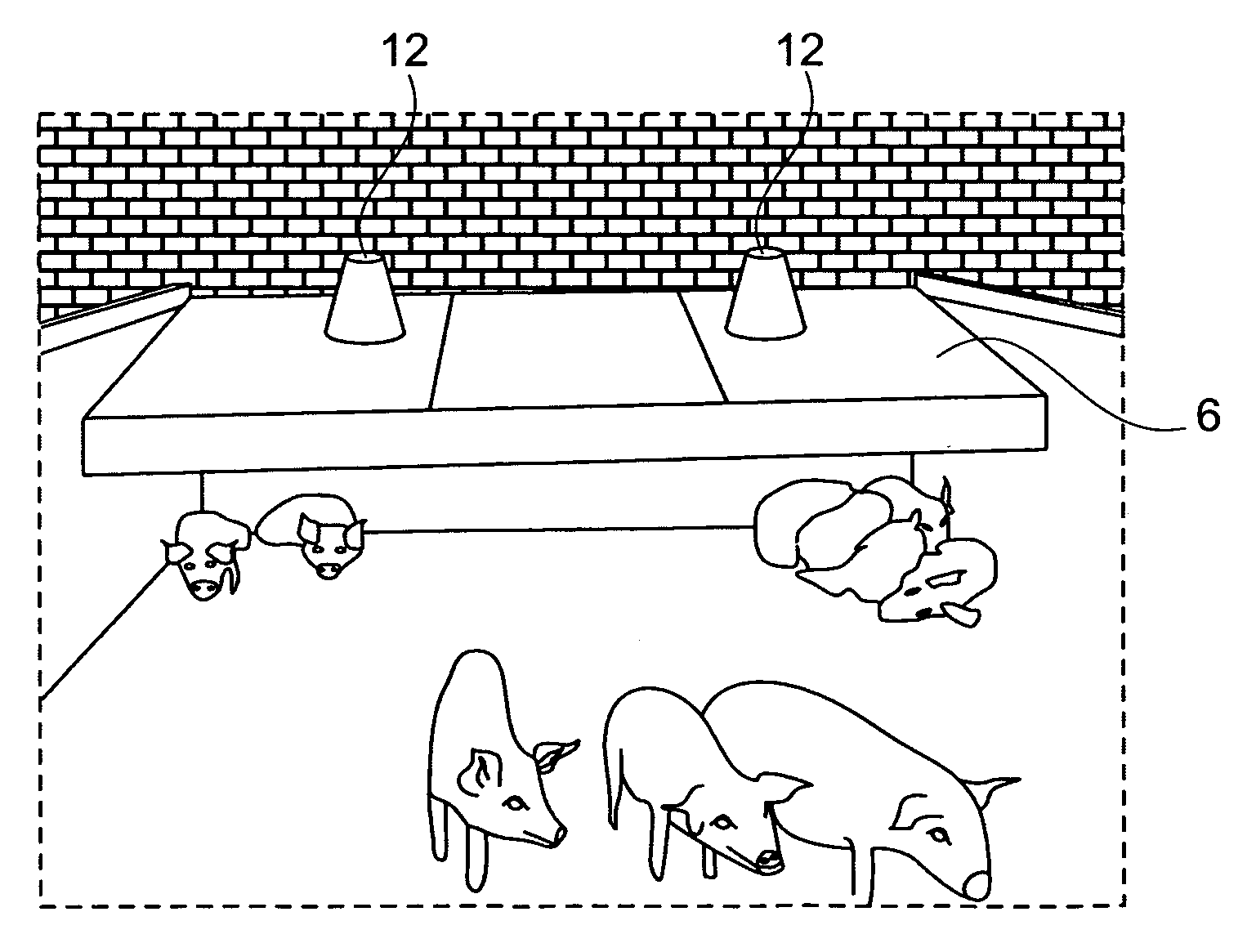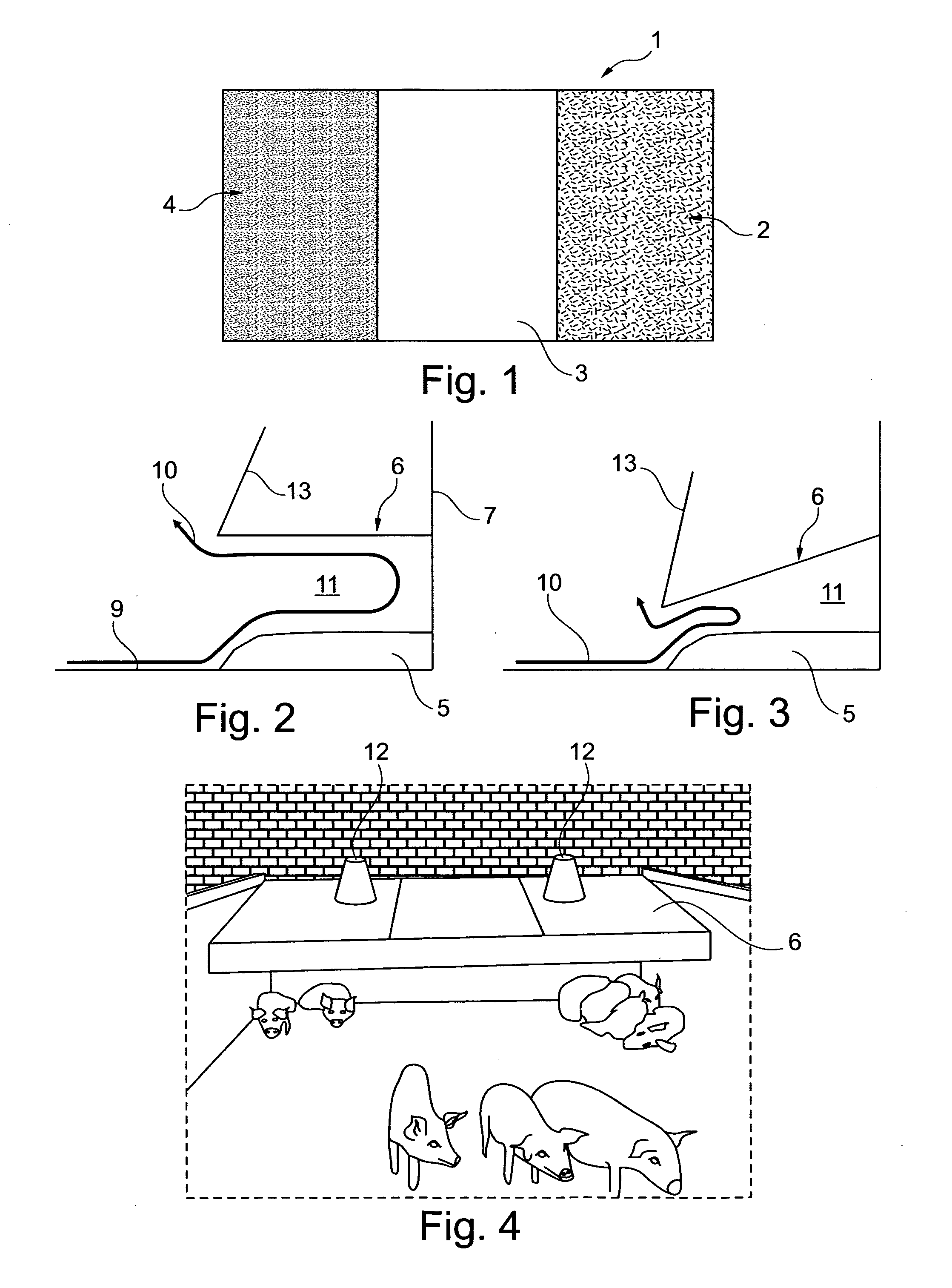Intelligent Climate Control in Domestic Animal Stables
a technology for domestic animals and stables, applied in the field of intelligent climate control in domestic animal stables, can solve the problems of reducing productivity, emitted up to four times as much heat, and too cold
- Summary
- Abstract
- Description
- Claims
- Application Information
AI Technical Summary
Benefits of technology
Problems solved by technology
Method used
Image
Examples
Embodiment Construction
[0011]It is thus the object of the invention to provide a cover and a method for regulating the climate in part of a pen by means of such a cover.
[0012]This is provided by a cover for covering at least part of a pen in stables for domestic animals, characterised in that the cover includes:[0013]means for fastening a rear edge of the cover to a side of the pen, where the means allow turning of the cover in relation to the side of the pen;[0014]one or more sensors mounted at the bottom side or top side of the cover or at a bracket fastened to a wall, where the sensors are heat sensors, in particular infrared temperature sensors, and / or where the sensors are a number of CO2 sensors;[0015]means for elevating and / or lowering the front edge of the cover opposite the rear edge where the cover is fastened to the side;[0016]a control which receives input from the sensors and which on the basis of pre-defined parameters activates the means for elevating and / or lowering the edge of the cover.
[...
PUM
 Login to View More
Login to View More Abstract
Description
Claims
Application Information
 Login to View More
Login to View More - R&D
- Intellectual Property
- Life Sciences
- Materials
- Tech Scout
- Unparalleled Data Quality
- Higher Quality Content
- 60% Fewer Hallucinations
Browse by: Latest US Patents, China's latest patents, Technical Efficacy Thesaurus, Application Domain, Technology Topic, Popular Technical Reports.
© 2025 PatSnap. All rights reserved.Legal|Privacy policy|Modern Slavery Act Transparency Statement|Sitemap|About US| Contact US: help@patsnap.com


